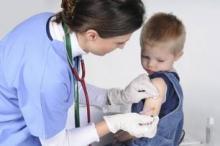ATLANTA – Vaccination rates increased dramatically and influenza rates decreased dramatically in children aged 6 months to 4 years in Connecticut following institution of a 2011 influenza vaccination requirement for children enrolled in day care, according to surveillance data.
Vaccination rates in this age group during the 2010-2011 influenza season, which was an H3N2-dominant season, were 85%, compared with 54% in 2009-2010, Kimberly Yousey-Hindes reported in a poster at the International Conference on Emerging Infectious Diseases.
Also, the proportion of all emergency department visits for influenza and influenzalike illness was 30% in 2011, compared with 34% in 2008 (the most recent prior H3N2 dominant influenza season), representing a significant decrease, said Ms. Yousey-Hindes, influenza program coordinator for the Connecticut Emerging Infectious Program at Yale University.
"When compared to the 2007-2008 season, among those hospitalized with influenza, the proportion of patients 6 months to 4 years decreased as well (13% vs. 10%)," she wrote, noting that the proportion of laboratory-confirmed influenza cases also decreased ... during the same time period. Both declines were statistically significant.
Vaccination was required effective Jan. 1, 2011, for all children aged 6 months to 59 months who were enrolled in a licensed Connecticut day care. This study used data from the Connecticut Hospital Emergency Department Syndromic Surveillance system, the Connecticut Emerging Infectious Programs’ Influenza-Associated Hospitalization Surveillance system, and influenza reports to the state reportable disease database to measure the impact of the new rule.
An estimated 60% of preschool-age children receive nonparental care each week, mostly in child care centers, suggesting that vaccination of these children could have population-level effects, Ms. Yousey-Hindes noted.
Ms. Yousey-Hindes had no conflicts of interest to report.


